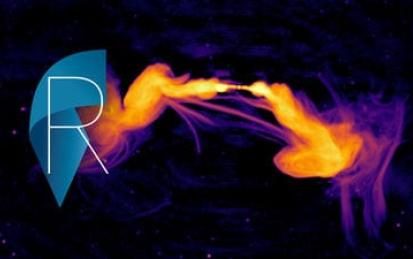

Our Courses

The Radio Sky II: Observational Radio Astronomy
This course covers the principles and practices of radio astronomical observations, in particular with modern interferometers. Topics range from radio telescope technology to the measurement equation to radio interferometric calibration and imaging.
-
Course by

-
 Self Paced
Self Paced
-
 English
English

Dealing With Missing Data
This course will cover the steps used in weighting sample surveys, including methods for adjusting for nonresponse and using data external to the survey for calibration. Among the techniques discussed are adjustments using estimated response propensities, poststratification, raking, and general regression estimation. Alternative techniques for imputing values for missing items will be discussed. For both weighting and imputation, the capabilities of different statistical software packages will be covered, including R®, Stata®, and SAS®.
-
Course by

-
 Self Paced
Self Paced
-
 18 hours
18 hours
-
 English
English
Clinical Decision Support Systems - CDSS 4
Machine learning systems used in Clinical Decision Support Systems (CDSS) require further external validation, calibration analysis, assessment of bias and fairness. In this course, the main concepts of machine learning evaluation adopted in CDSS will be explained. Furthermore, decision curve analysis along with human-centred CDSS that need to be explainable will be discussed. Finally, privacy concerns of deep learning models and potential adversarial attacks will be presented along with the vision for a new generation of explainable and privacy-preserved CDSS.
-
Course by

-
 Self Paced
Self Paced
-
 8 hours
8 hours
-
 English
English

Computational Methods in Pricing and Model Calibration
This course focuses on computational methods in option and interest rate, product’s pricing and model calibration. The first module will introduce different types of options in the market, followed by an in-depth discussion into numerical techniques helpful in pricing them, e.g. Fourier Transform (FT) and Fast Fourier Transform (FFT) methods. We will explain models like Black-Merton-Scholes (BMS), Heston, Variance Gamma (VG), which are central to understanding stock price evolution, through case studies and Python codes.
-
Course by

-
 Self Paced
Self Paced
-
 24 hours
24 hours
-
 English
English

Robotics: Capstone
In our 6 week Robotics Capstone, we will give you a chance to implement a solution for a real world problem based on the content you learnt from the courses in your robotics specialization. It will also give you a chance to use mathematical and programming methods that researchers use in robotics labs.
-
Course by

-
 Self Paced
Self Paced
-
 26 hours
26 hours
-
 English
English

Interventions and Calibration
This course covers approaches for modelling treatment of infectious disease, as well as for modelling vaccination. Building on the SIR model, you will learn how to incorporate additional compartments to represent the effects of interventions, such the effect of vaccination in reducing susceptibility. You will learn about ‘leaky’ vaccines and how to model them, as well as different types of vaccine and treatment effects.
-
Course by

-
 Self Paced
Self Paced
-
 24 hours
24 hours
-
 English
English

Term-Structure and Credit Derivatives
This course will focus on capturing the evolution of interest rates and providing deep insight into credit derivatives. In the first module we discuss the term structure lattice models and cash account, and then analyze fixed income derivatives, such as Options, Futures, Caplets and Floorlets, Swaps and Swaptions. In the second module, we will examine model calibration in the context of fixed income securities and extend it to other asset classes and instruments. Learners will operate model calibration using Excel and apply it to price a payer swaption in a Black-Derman-Toy (BDT) model.
-
Course by

-
 Self Paced
Self Paced
-
 14 hours
14 hours
-
 English
English

Using Sensors With Your Raspberry Pi
This course on integrating sensors with your Raspberry Pi is course 3 of a Coursera Specialization and can be taken separately or as part of the specialization. Although some material and explanations from the prior two courses are used, this course largely assumes no prior experience with sensors or data processing other than ideas about your own projects and an interest in building projects with sensors. This course focuses on core concepts and techniques in designing and integrating any sensor, rather than overly specific examples to copy.
-
Course by

-
 Self Paced
Self Paced
-
 9 hours
9 hours
-
 English
English

Visual Perception for Self-Driving Cars
Welcome to Visual Perception for Self-Driving Cars, the third course in University of Toronto’s Self-Driving Cars Specialization. This course will introduce you to the main perception tasks in autonomous driving, static and dynamic object detection, and will survey common computer vision methods for robotic perception. By the end of this course, you will be able to work with the pinhole camera model, perform intrinsic and extrinsic camera calibration, detect, describe and match image features and design your own convolutional neural networks.
-
Course by

-
 31 hours
31 hours
-
 English
English



